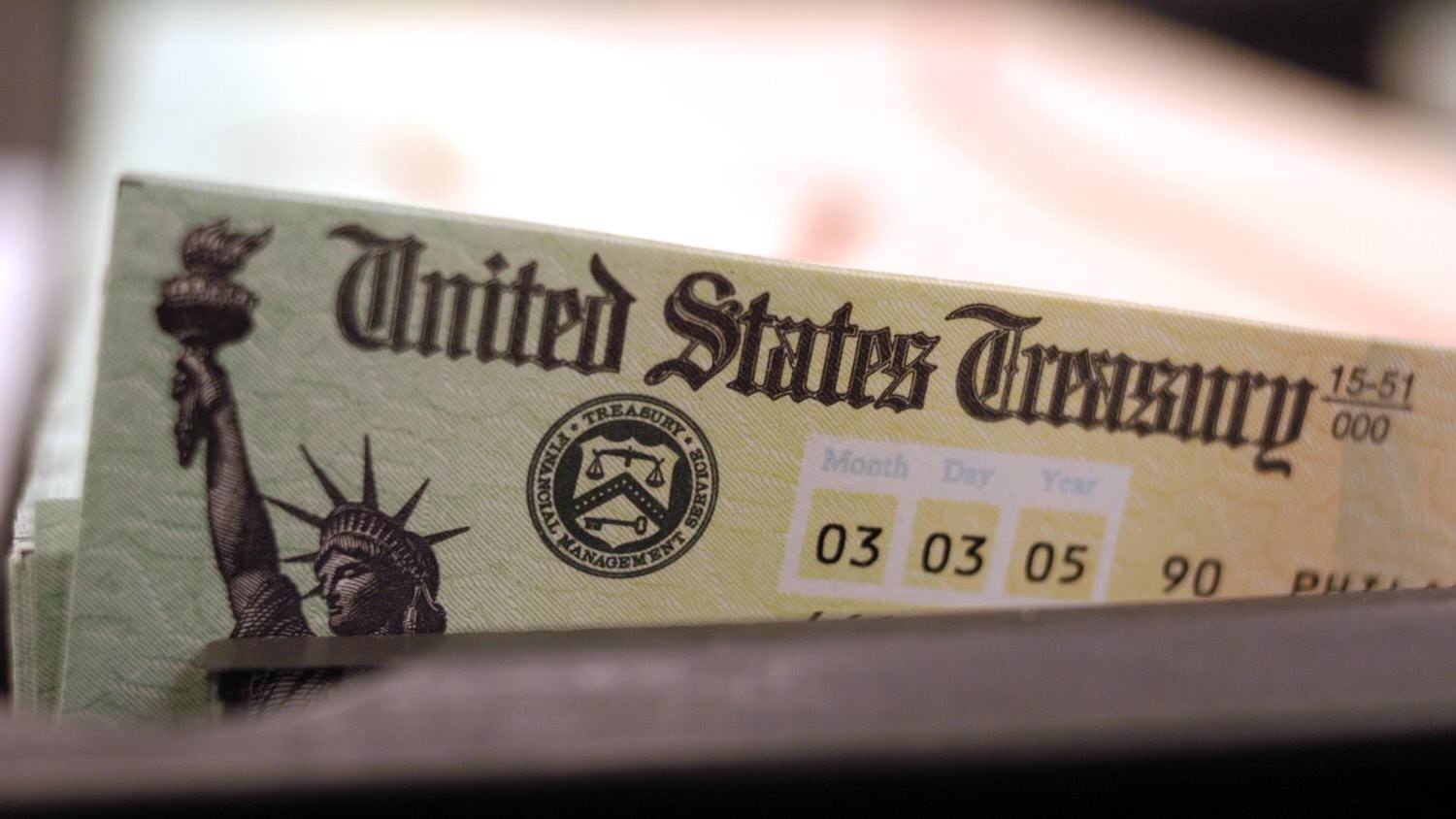by Jeffrey Kleintop, CFA® Managing Director, Chief Global Investment Strategist, Michelle Gibley, & Heather O'Leary, Charles Schwab & Co., Inc.
While there are no absolute winners in a trade war, there may be relative winners in the global stock market for investors to consider.
Following three days of gains, the stock markets fell after the new U.S. import tariffs were announced on April 2. The 20% tariffs on European Union (EU) and 10% on the United Kingdom. were largely in-line with consensus expectations. The announcement for other countries, particularly in Asia, came in very high relative to expectations (China 54%, Cambodia 49%, Vietnam 46%, Thailand 36%, Taiwan 32%)—which was a negative surprise to the global markets. We calculate that the new tariffs bring the overall average rate of U.S. import tariffs to around 25%.
Soaring U.S. import tariffs

Source: Charles Schwab calculations of US Bureau of Economic Analysis data as of April 2, 2025.
Forecasts contained herein are for illustrative purposes only, may be based upon proprietary research and are developed through analysis of historical public data.
It's not just the tariffs but also the impact on growth from business leaders pulling back on investment and consumers becoming more cautious that is weighing on stock markets. The drop in oil prices as well as the decline in the dollar and bond yields show evidence that investors are considering the possibility of a broader economic slowdown, particularly in the U.S., instead of just shifting trade patterns.
Countries by dependence upon exports to the U.S.

Source: Charles Schwab, U.S. Bureau of Economic Analysis, IMF World Economic Outlook (Oct 2024), data retrieved 4/6/2025.
More tariffs this week
Additional tariffs on a sector basis may be forthcoming. The April 2nd release from the White House excluded pharmaceuticals and semiconductors from the tariffs, suggesting there may be additional announcements, perhaps before April 9, when the new tariffs go into effect.
When announced, those pharmaceutical tariffs may be similar to the 20% on the EU and 31% on Switzerland, where the U.S. gets a lot of branded pharmaceuticals, and 26% from India, where the U.S. sources generic drugs. The chip tariffs could be about the same as Taiwan's tariff rate (32%) where dominant chipmaker TSMC is based. So, while those sectors appear to have been spared, the potential tariffs for these sectors seems about as bad as what has been announced at the country level.
Open to tariff negotiations
On the evening of April 2, President Trump said that he is "open to tariff negotiations if other countries offer something phenomenal." Historically, Trump seems to have had a very flexible definition of what a phenomenal deal is.
- He literally called the updated trade agreement with Japan in 2019 "phenomenal" and a "tremendous" agreement.
- He raved about how great the update to the NAFTA agreement (retitled as the USMCA) was when he made it. Calling it a "great deal" and a "colossal victory".
- He called the Phase One trade deal with China "momentous" and "historic and transformative".
From government statements and various media sources, we have heard responses from many countries indicating different levels of willingness to make offers. Among the first to respond were nations in Asia, many of which were hit the hardest by the new tariffs.
- President Trump posted on social media after a phone call with Vietnam's leader that the country is willing to eliminate Vietnamese tariffs on U.S. goods to avoid the new U.S. tariffs. In a statement about the call with Trump, Vietnam's government said the two leaders will discuss an agreement to concretize these commitments. The country is planning to send a delegation to U.S. this week to finalize a deal to purchase Boeing planes.
- Australia's Prime Minster said his country would seek negotiations with the U.S. and would not impose reciprocal tariffs.
- Taiwanese officials reportedly have been considering increase in energy imports and tariff reductions, according to news reports.
- Malaysia's Prime Minister posted on his social media that he will lead efforts to coordinate a regional response in Southeast Asia. Countries in the Association of Southeast Asian Nations, a collective grouping of ten countries in the region, are among the hardest hit by U.S. tariffs.
- India's government stated that discussions were "ongoing for the expeditious conclusion of a mutually beneficial, multi-sectoral Bilateral Trade Agreement." Those discussions include lowering India's tariffs on U.S. agricultural products. India already removed tariffs on U.S. autos, motorcycles, and bourbon earlier this year.
- In contrast to other Asian nations, China responded to U.S. tariffs with an additional 34% tariff on all U.S. goods, the most sweeping imposed. This aggressive response may make a near-term deal to end the trade war less likely. China is seeking to boost consumer spending, which makes up 40-50% of GDP, rather than make a costly deal with the U.S. to spare the less than 3% tied to direct U.S. exports. China announced a big stimulus program planned to drive total deficit spending to 11% of GDP this year, unveiled at the March 5 National People's Congress meeting. Additionally, China's government is likely to use its new tariff revenue to support exporters and to further offset the impact of tariffs on GDP. China's new tariffs come into effect on Thursday, April 10, a day after the new U.S. tariffs go into effect.
In general, countries outside of Asia have communicated that they are preparing responses likely to be presented soon, with a few exceptions. For example, Israel has removed all remaining tariffs on U.S. imports and is seeking to negotiate a reduction in tariffs on their exports to the U.S. The EU is planning on moving forward on April 12th with already announced retaliation against Trump's earlier announced steel and aluminum tariffs.
Relative winners
While there are no winners in a trade war, there may be some relative winners in the global stock market for investors to consider including more domestically focused companies, European stocks, travel and leisure stocks outside the U.S., stocks in Mexico, Canada and Latin America.
Domestically-focused companies. Companies in Europe and the U.S. with more domestic sales exposure are performing much better than the stocks of companies with a lot of international sales exposure which are now subject to tariffs or retaliatory tariffs. Global consumer discretionary stocks like autos and footwear (two of the worst performing industries this year) may continue to lag while more locally focused companies in the utilities and communications services sectors may continue to perform better. The chart below shows a basket of European companies with high sales exposure to continental Europe has been on the rise while those with more international sales (mainly U.S. sales) has fallen.
European stocks with less US tariff exposure outperform

Source: Charles Schwab, Bloomberg, Goldman Sachs, data as of 4/2/2025. Performance normalized, or set to zero, at 10/1/2024.
Past performance is no guarantee of future results.
European stocks. For Europe, the economic exposure to U.S. exports is relatively small and fiscal and monetary stimulus in 2025 could help offset the impact of U.S. tariffs. EU goods exports to the U.S. account for only 3.5% of EU GDP, according to data from the International Monetary Fund (IMF). We estimate that a 20% tariff on the EU would likely result in a near-term direct hit to the EU economy of about 0.6% of GDP. As an offset to this estimated impact to growth, Germany (Europe's largest economy) has already approved a big defense spending and public investment package. The increased defense spending is above 1% of GDP and the infrastructure fund of 500 billion euros is expected to lead to an increase in fiscal spending for the next several years, potentially adding 1.5% to GDP growth per annum. These programs potentially add 2.5% to German GDP. Additionally, on March 6, the European Council unveiled a proposal to exempt defense spending from the EU's fiscal rules and set up a 150 billion euro EU loan facility to fund military expenditures. Finally, three more rate cuts by the European Central Bank appear likely this year, which would take the policy rate below 2%. This added fiscal and monetary stimulus may deliver a sizable boost to growth, potentially more than offsetting any drag from tariffs. Also, the EU was hit with 20% tariffs, less than Asian exporters Japan and South Korea which compete for U.S. export share with Europe in categories like autos and electronics. The chart below shows Europe's outperformance this year against the S&P 500, even after the sharp tariff-driven sell-off, reflecting broad outperformance of about 20 percentage points.
European stocks continue to outperform the US

Source: Charles Schwab, Bloomberg data as of 4/4/2025.
Performance is normalized or set to zero, on 12/31/3024. Indexes are unmanaged, do not incur management fees, costs, and expenses and cannot be invested in directly. Past performance is no guarantee of future results.
Travel and leisure spending in Europe. Inbound international travel amounted to 3% of U.S. GDP in 2023, according to the U.S. National Travel and Tourism Office. Canada is the top source of international visitors to the U.S., and it appears that Canadians are already heading elsewhere. Canadian residents took 13% fewer trips by air to the U.S. in February than they did a year ago and land border crossings fell 23%. Looking forward at air travel bookings through the summer, Canada-U.S. routes were down by more than 70% in March compared to the same period last year, according to data from industry tracker OAG. Shifting travel patterns away from the U.S. in response to U.S. trade policy could benefit Europe with France, Spain, and Italy among the world's top destinations. According to estimates by the Bank of Italy, the tourism sector directly generates more than 5% of GDP. This may benefit European economies overall, but specifically may boost services businesses in Europe's Consumer Discretionary sector, specifically within the hotels, restaurants, and leisure industry.
Canada-U.S. air travel bookings down over 70% from a year ago

Source: OAG, https://www.oag.com/blog/canada-us-airline-capacity-aviation-market, data retrieved 4/4/2025.
Mexico and Canada. Omitted from the April 2 tariffs, the tariff on US imports from Canada and Mexico remain at 25% for now excluding United States-Mexico-Canada Agreement (USMCA) goods—which are tariff free and make up about 40% of exports for both countries. According to the April 2 Fact Sheet from the White House, should the additional immigration and fentanyl-related tariffs be dropped, the tariffs would likely fall to 10-12%—among the lowest for developed nations. Stocks in Canada and Mexico continued to outperform U.S. stocks after the tariff announcement.
Latin America. Latin America's biggest exports are to China not the U.S., and its stocks are therefore more tied to China's domestic growth than that of the United States. Since its inception in 2004, the MSCI EM Latin America Index has delivered a positive average monthly annualized gain of +5% when China's Caixin manufacturing Purchasing Managers Index (PMI) was above 50—the threshold between growth and contraction/retraction—while the U.S. manufacturing PMI from the Institute for Supply Management was below 50. Conversely, when the China PMI was below 50 and the U.S. PMI was above 50, average returns fell -10%. This year, the rise in China's PMI above 50, even as the U.S. PMI has slipped below 50, has helped Latin American stocks rebound on optimism around China's recovery, despite concerns over U.S. economic growth. For example, the stock market of Brazil, Latin America's biggest economy, has risen 10% this year through Friday, as measured by the MSCI Brazil Index in US dollars. March stimulus announcements from the Chinese government lifted sentiment and Brazil's stocks even posted gains on Thursday April 3 after the tariff announcement by the U.S., and fell less than 3% on Friday, April 4, about half of the decline in the S&P 500 Index.
Latin American stocks tied to China more than U.S.

Source: Charles Schwab, Bloomberg data as of 4/6/2025.
Indexes are unmanaged, do not incur management fees, costs, and expenses and cannot be invested in directly. Past performance is no guarantee of future results.
Michelle Gibley, CFA®, Director of International Research, and Heather O'Leary, Senior Global Investment Research Analyst, contributed to this report.
Copyright © Scwhab.com














